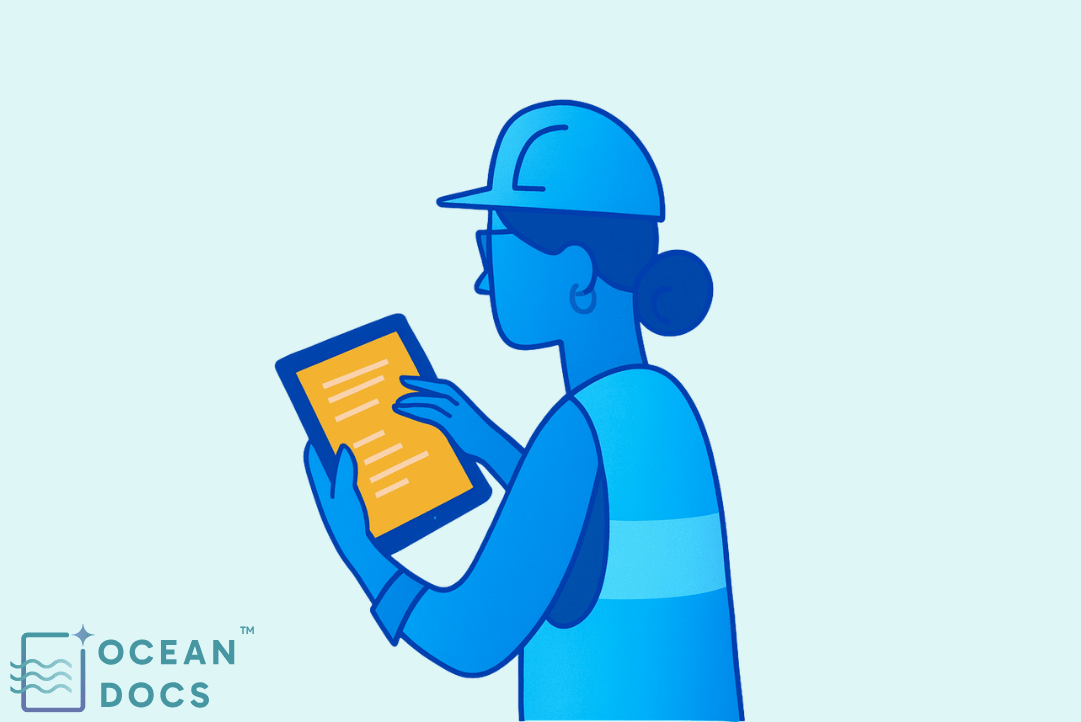
What Does SIRE Vetting Mean and How to Be Ready | OceanDocs AI
October 7, 2025 By OceanDocs AI
SIRE Vetting is an essential inspection process for tankers and vessels that carry petroleum products. It helps verify that ships follow strict safety and operational standards before they are approved for hire by charterers. The programme, recognized worldwide, promotes safer voyages and better compliance across the maritime sector.
Knowing how SIRE Vetting works and what inspectors look for helps ship operators stay prepared, avoid delays, and maintain strong safety records.
What Does SIRE Vetting Mean?
SIRE stands for Ship Inspection Report Programme, introduced by the Oil Companies International Marine Forum (OCIMF) to standardize inspections across the oil, chemical, and gas tanker industry.
Under this programme:
-
Accredited inspectors evaluate a ship’s safety management, crew competence, and compliance with maritime regulations like MARPOL, SOLAS, ISM Code, and STCW.
-
The inspection reviews vessel condition, documentation, and operational practices.
-
Reports are uploaded to the SIRE database, giving charterers access to inspection histories before contracting.
Why Is SIRE Vetting Important?
Passing SIRE Vetting:
-
Builds trust with charterers by demonstrating strict adherence to maritime compliance.
-
Proves the vessel’s safety, efficiency, and environmental responsibility.
-
Reduces the likelihood of incidents, penalties, or Port State Control detentions.
Failure, on the other hand, can result in lost contracts, reputational setbacks, and increased scrutiny in a competitive market.
How Can You Be Ready for SIRE Vetting?
1. Keep Documentation in Order
Ensure all shipping documents, safety certificates, and maritime documentation are complete, current, and aligned with IMO regulations. This includes Fire Control Plans, safety drills, and pollution prevention records.
2. Maintain Vessel Condition
Regularly inspect and maintain the vessel’s structure, machinery, and safety systems. Inspectors check compliance with SOLAS requirements, so preventive maintenance is key.
3. Train the Crew
A well-trained, HSEQ-aware crew makes all the difference. They should be familiar with the ISM Code, emergency protocols, and safe operational practices.
4. Conduct Internal Audits
Perform mock vetting inspections and use document intelligence tools like OceanDocs AI to organize manuals, certificates, and inspection records for instant retrieval and review.
5. Address Previous Findings
Revisit past SIRE reports and close any outstanding non-conformities. Corrective action demonstrates your commitment to ongoing improvement and compliance.
Final Thoughts
SIRE Vetting is more than an inspection, it’s a reflection of a vessel’s operational excellence, safety culture, and readiness to operate in high-risk cargo environments. Staying proactive with documentation, crew training, and compliance audits ensures smoother inspections and stronger charterer confidence.
With OceanDocs AI, shipping companies can simplify document management, access critical records instantly, and ensure every inspection is backed by reliable, well-organized data.
A well-prepared vessel doesn’t just pass inspections, it earns trust and long-term opportunities in the maritime sector.